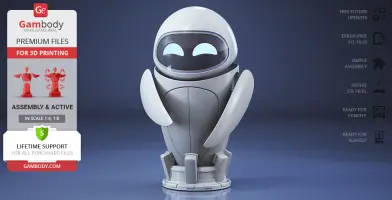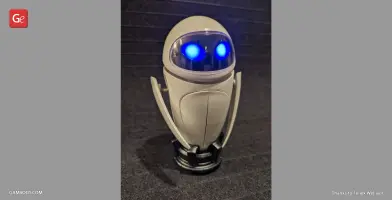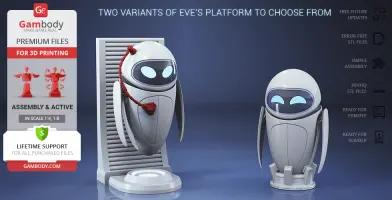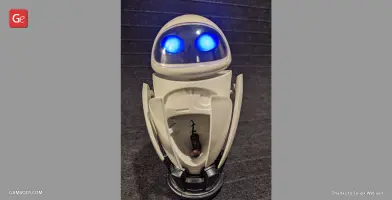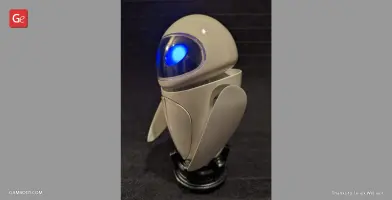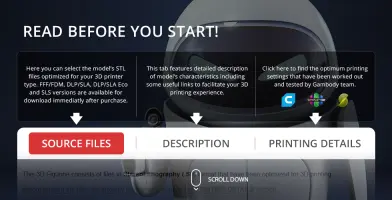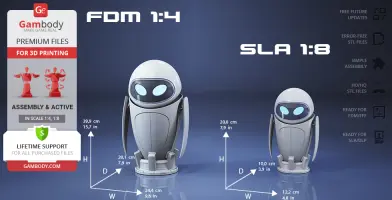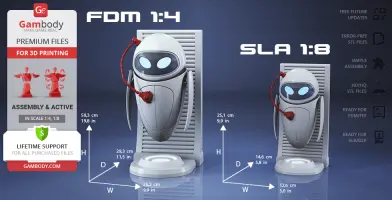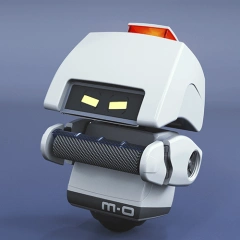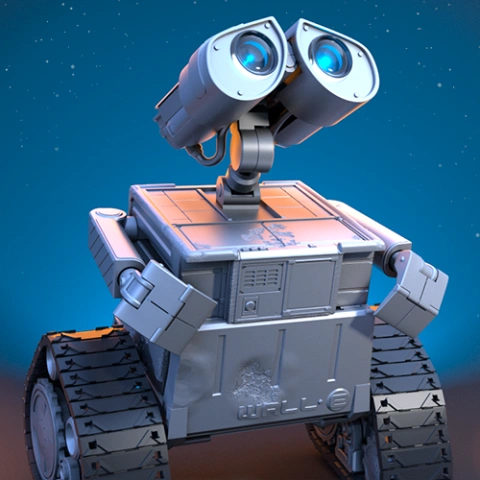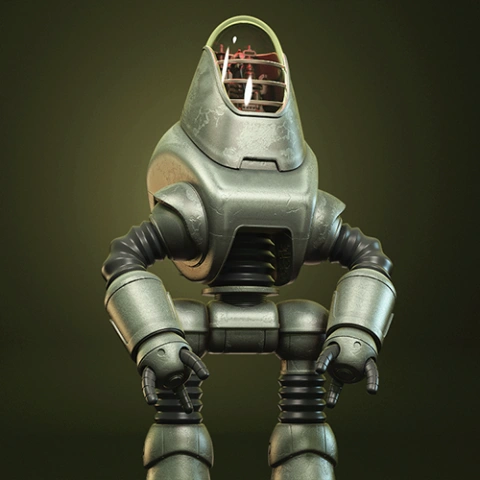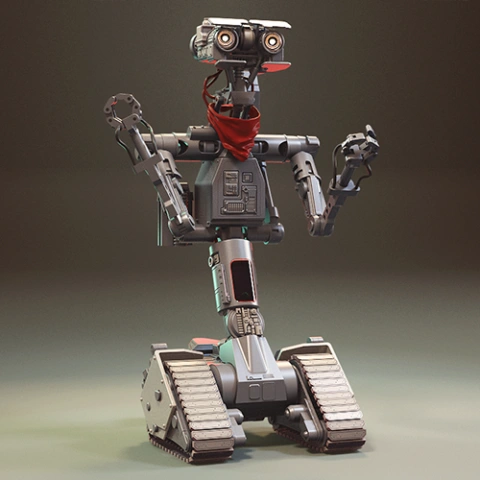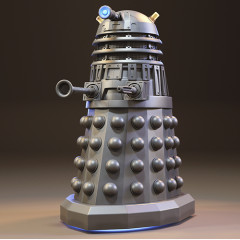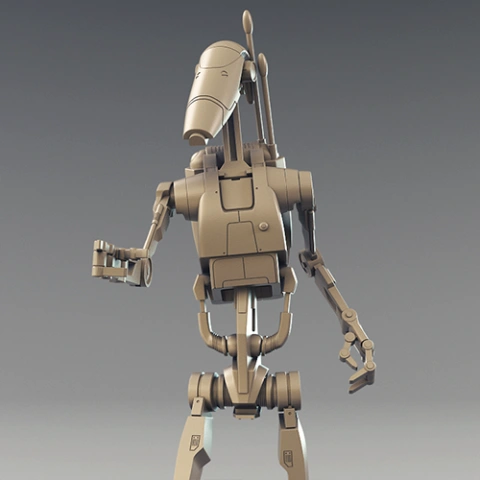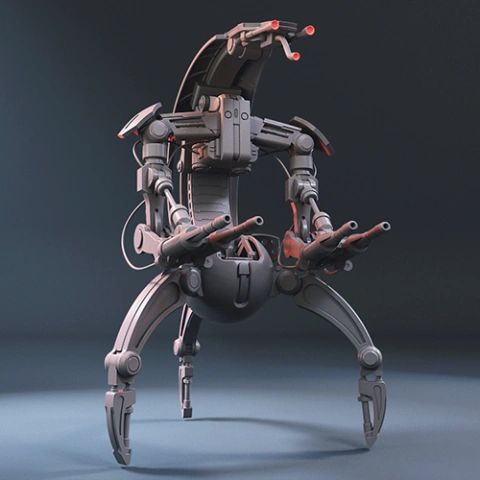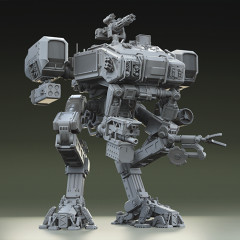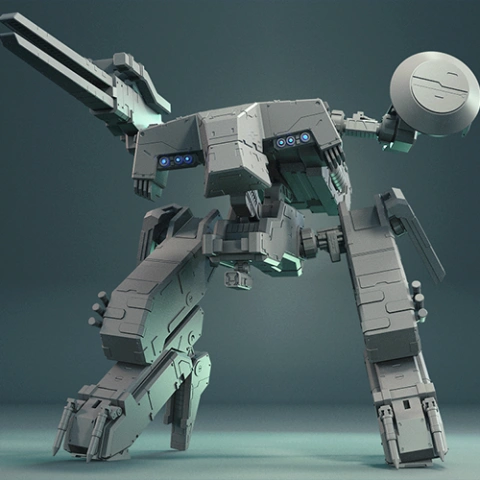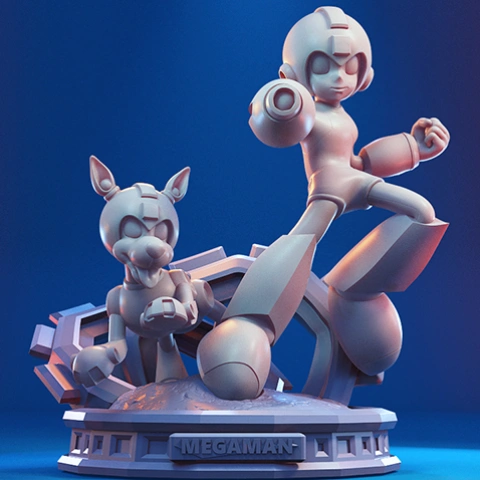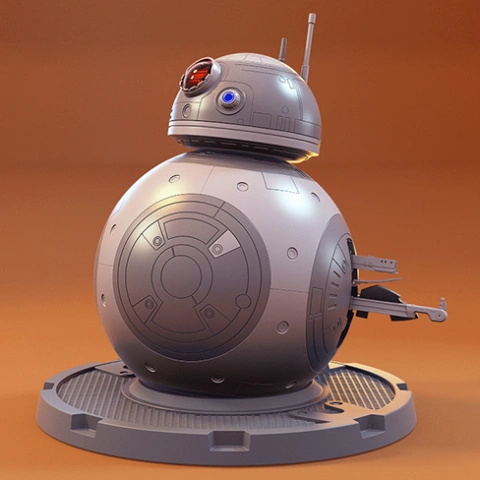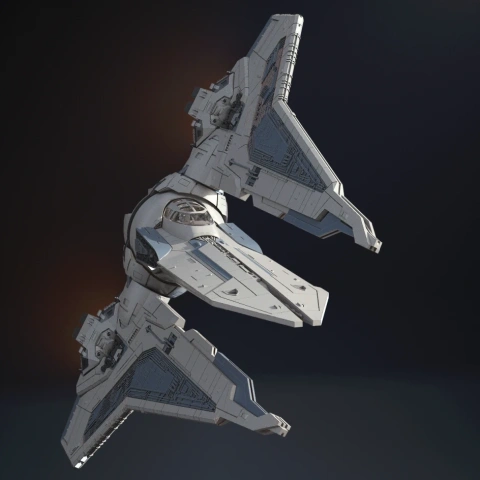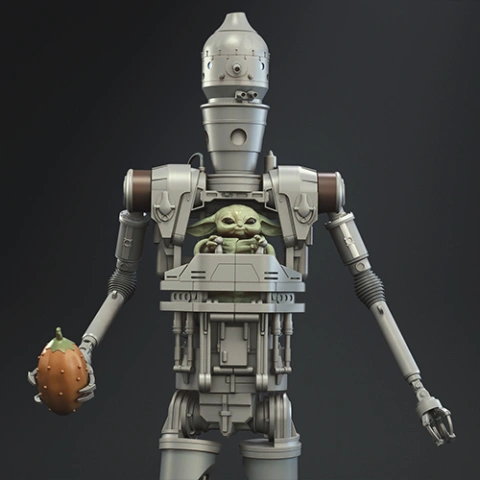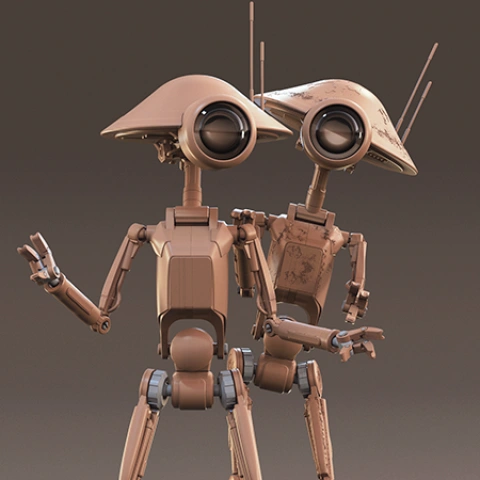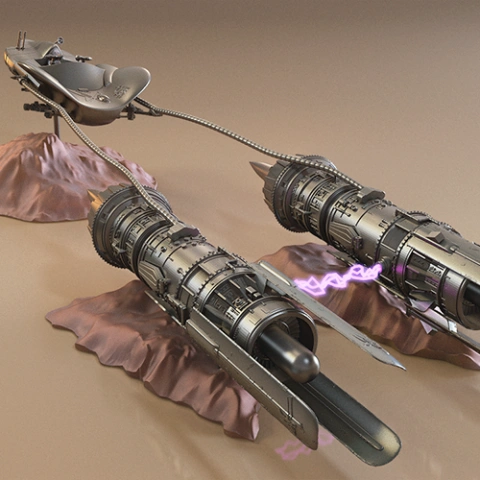Files
3D model format
Stereolithography (.stl)
Total files
Slicer settings
not available
Mesh error check
not specified
Support
Lifetime support from Gambody team
Update requests
not specified
Model versions
FFF/FDM
Assembly method
not specified
Features
DLP/SLA
Assembly method
not specified
Features
Additional details
Part of diorama
No
Special pack included
No
You will get instant access to the STL files of EVE 3D Printing Model | Assembly + Action after completing your purchase. Simply add the model to your cart and check out using PayPal, credit or debit card, Apple Pay, Google Pay, Alipay, or other available payment methods.
Watch the assembly video for EVE 3D Printing Model | Assembly + Action, and explore more tutorials, behind-the-scenes content, 3D printing timelapses, and painting guides on the official Gambody YouTube channel.
This 3D Model of EVE from 2008 WALL-E consists of files in StereoLithography (.Stl) format that is optimized for 3D printing.
Before printing the files, we strongly recommend reading the PRINTING DETAILS section.
WHAT WILL YOU GET AFTER PURCHASE?
- 2 versions of WALL-E's EVE STL files for FFF/FDM and DLP/SLA - files for all versions are available for download after the purchase
- STL files of high-poly EVE 3D Model for 3D printing consist of 120 parts
- Sizes:
FFF/FDM: 399 mm tall, 244 mm wide, 201 mm deep (simple stand)
FFF/FDM: 503 mm tall, 252 mm wide, 293 mm deep (repair platform)
DLP/SLA: 200 mm tall, 122 mm wide, 100 mm deep (simple stand)
DLP/SLA: 251 mm tall, 126 mm wide, 146 mm deep (repair platform)
- Assembly Manual for FFF/FDM 1.0 and DLP/SLA 1.0 versions in PDF format
- Detailed settings that we provide as a recommendation for Cura, Simplify3D, Slic3r and PrusaSlicer for the best print
- Full technical support from the Gambody Support Team
Detailed information about this 3D printing model is available in the DESCRIPTION section.
Before printing, take a look at Printing Details for recommended settings and tips to achieve better results.
ABOUT THIS 3D MODEL
EVE stands for Extraterrestrial Vegetation Evaluator, an egg-shaped advanced probe droid who was sent to Earth on a scanning mission for signs of sustainable life. Determined to complete her mission, EVE ignores the romantic advances of a trash compactor WALL-E at first but eventually falls in love with the lovely robot. Together the pair discovers the true meaning of friendship, love, and hope, and their discovery of a sprouting plant helps bring life back to the planet.
The beautiful EVE model for 3D printing is designed with six interchangeable face variants and several articulated mechanisms for your delicate probe droid to express any emotion you prefer. WALL-E is finally no longer lonely in Gambody’s catalogue, and so should the WALL-E in your 3D printed collection be!
ADAPTATION FOR 3D PRINTING
EVE for 3D printing is an active assembly model and its moderation and adaptation for different types of 3D printers took the Gambody team 40 hours in total.
For you to receive the cleanest 3D printing result possible and to minimize the amount of filament needed for generated support the Extraterrestrial Vegetation Evaluator model was divided into many assembly parts, and special mechanisms were introduced into all model’s movable elements to give you an opportunity to display EVE in a variety of positions and scenes.
All assembly parts are provided in STL files in recommended positions that were worked out in order to ensure the smoothness of the details’ surfaces after printing and that the 3D printing beginners won't face difficulties when placing the parts on a build plate. When downloading any model's file you will also receive "Assembly Manual" for FFF/FDM 1.0 and DLP/SLA 1.0 versions in PDF format. We highly recommend that you get acquainted with the “Assembly video” and "Assembly Manual" before getting down to the EVE model.
The model is saved in STL files, a format supported by most 3D printers. All STL files for 3D printing have been checked in Netfabb and no errors were shown.
The model’s scale was calculated from the height of EVE which is 1466 mm. The 3D printing model’s chosen scale is 1:4 for the FFF/FDM version and 1:8 for the DLP/SLA version.
VERSIONS' SPECIFICATIONS
FFF/FDM 1.0 version features:
- Contains 67 parts;
- A printed model stands 399 mm tall, 244 mm wide, 201 mm deep (simple stand); 503 mm tall, 252 mm wide, 293 mm deep (repair platform);
- There are two variants of EVE’s platform to choose from - a bigger repair platform and a simple stand;
- Six variants of EVE’s face will help you display different emotions;
- There are two variants of EVE’s right arm - a default one and an arm with a pulse gun;
- Armsaremultidirectional and can be folded right up to EVE’s body;
- EVE’s head is multidirectional as well, it can go up and fold down right up to the body;
- Doors on EVE’s bellyopen to place WALL-E's plant sprouting from the boot inside EVE’s body;
- There are four variants of EVE’s body - two variants are solid, while the other two are split to be assembled;
- One pair of body variants has notches to install EVE on the repair platform. You may use corks to conceal these notches if you choose to display EVE on a simple stand;
- Tunnels throughout the robot’s body and repair platform are provided for LED wiring to light up the face and platform's charging element;
- Assembly of the articulated elements in the FDM version requires additional “pins” that do not come in STL files but can be made out of short pieces of regular 1.75mm filament;
- All parts are divided in such a way that you will print them with the smallest number of support structures.
DLP/SLA 1.0 version features:
- Contains 53 parts;
- A printed model stands 200 mm tall, 122 mm wide, 100 mm deep (simple stand); 251 mm tall, 126 mm wide, 146 mm deep (repair platform);
- There are two variants of EVE’s platform to choose from - a bigger repair platform and a simple stand;
- Six variants of EVE’s face will help you display different emotions;
- There are two variants of EVE’s right arm - a default one and an arm with a pulse gun;
- Armsaremultidirectional and can be folded right up to EVE’s body;
- EVE’s head is multidirectional as well, it can go up and fold down right up to the body;
- Doors on EVE’s bellyopen to place WALL-E's plant sprouting from the boot inside EVE’s body;
- There are four variants of EVE’s body - two variants are solid, while the other two are split to be assembled;
- One pair of body variants has notches to install EVE on the repair platform. You may use corks to conceal these notches if you choose to display EVE on a simple stand;
- Tunnels throughout the robot’s body and repair platform are provided for LED wiring to light up the face and platform's charging element;
- Assembly of the articulated elements in the SLA version requires additional “pins” that do not come in STL files but can be made out of short pieces of a regular paper clip;
- All parts are divided in such a way to fit the build plates and to ensure that support structures are generated where needed.
You can get the model of EVE for 3D Printing immediately after the purchase! Just click the green Buy button in the top-right corner of the model’s page. You can pay with PayPal or your credit card.
Watch the tutorial on how to assemble EVE 3D Printing Model at Gambody YouTube channel.
Also, you may like WALL-E3D Printing Model, as well as more Cartoons 3D Printing Models.
_______
FAQ:
Where can I print a model if I have no printer?
How to get started with 3D printing?
How to set up my 3D printer?
How to choose right 3D model print bed positioning?
How to paint printed figurine?
Average customer rating (9 reviews)
3.9
Ratings breakdown
Click a star rating to filter reviews
Overall experience
Level of detail in the model
3.9
Model cut quality and assembly guide
3.9
Clarity and accuracy of the model page
3.9
Level of detail in the model
1
Model cut quality and assembly guide
1
Clarity and accuracy of the model page
1
Level of detail in the model
4
Model cut quality and assembly guide
4
Clarity and accuracy of the model page
4
Level of detail in the model
5
Model cut quality and assembly guide
5
Clarity and accuracy of the model page
5
Level of detail in the model
2
Model cut quality and assembly guide
2
Clarity and accuracy of the model page
2
Level of detail in the model
5
Model cut quality and assembly guide
5
Clarity and accuracy of the model page
5
Level of detail in the model
3
Model cut quality and assembly guide
3
Clarity and accuracy of the model page
3
Level of detail in the model
5
Model cut quality and assembly guide
5
Clarity and accuracy of the model page
5
Level of detail in the model
5
Model cut quality and assembly guide
5
Clarity and accuracy of the model page
5
Level of detail in the model
5
Model cut quality and assembly guide
5
Clarity and accuracy of the model page
5
To avoid printing issues and achieve the best quality, we highly recommend applying the following settings:
Generic
Below you can find printing recommendations for Cura, Bambu Lab, Simplify3D, Slic3r and PrusaSlicer software.
Disclaimer: The following printing settings are a recommendation, not an obligation. The parameters can vary depending on the peculiarities of your 3D printer, the material you use, and especially the particular assembly part you are working with. Each part that any model comprises often needs preliminary review, and you are free to tweak the settings the way you find suitable.
Note:
You can scale up the model (downscaling for FFF/FDM 3D printers is not recommended!);
All connectors should be printed at 100% Infill.
Bambu Lab printing recommendations:
These basic 3D printing settings recommendations for beginners were tested in Bambu Studio 1.9.1. Test models were printed on the Bambu Lab A1, Bambu Lab A1 Mini, Creality Ender 3 S1, Anycubic Kobra 2, and Anycubic Vyper using PLA and PETGfilaments.
To avoid printing problems, we recommend the following settings:download
Cura printing recommendations:
These are averaged settings which were tested in the Cura 5.2.1 slicer. Test models were printed on Anycubic Vyper, Creality Ender 3 Pro with PLA filament.
To avoid printing problems, we recommend the following settings:download
Simplify3D printing recommendations:
These are averaged settings which were tested in the Simplify3D 5.0.0 slicer. Test models were printed on Anycubic Vyper, FLSUN v400, Ender3 S1 with PLA filament.
To avoid printing problems, we recommend the following settings:download
Slic3r printing recommendations:
These basic 3D printing settings recommendations for beginners were tested in Slic3r 1.3.0 software. Test models were printed on Ultimaker 2, Creality Ender 3, Creality Cr-10S pro v2, Anycubic I3 Mega, Anycubic I3 MegaS, Anycubic Vyper with PLA and PetG filaments.
To avoid printing problems, we recommend the following settings:download
PrusaSlicer printing recommendations:
These basic 3D printing settings recommendations for beginners were tested in PrusaSlicer 2.3.1. Test models were printed on Ultimaker 2, Creality Ender 3, Creality Cr-10S pro v2, Anycubic I3 Mega, Anycubic I3 MegaS, Anycubic Vyper with PLA and PETG filaments.
To avoid printing problems, we recommend the following settings:download
